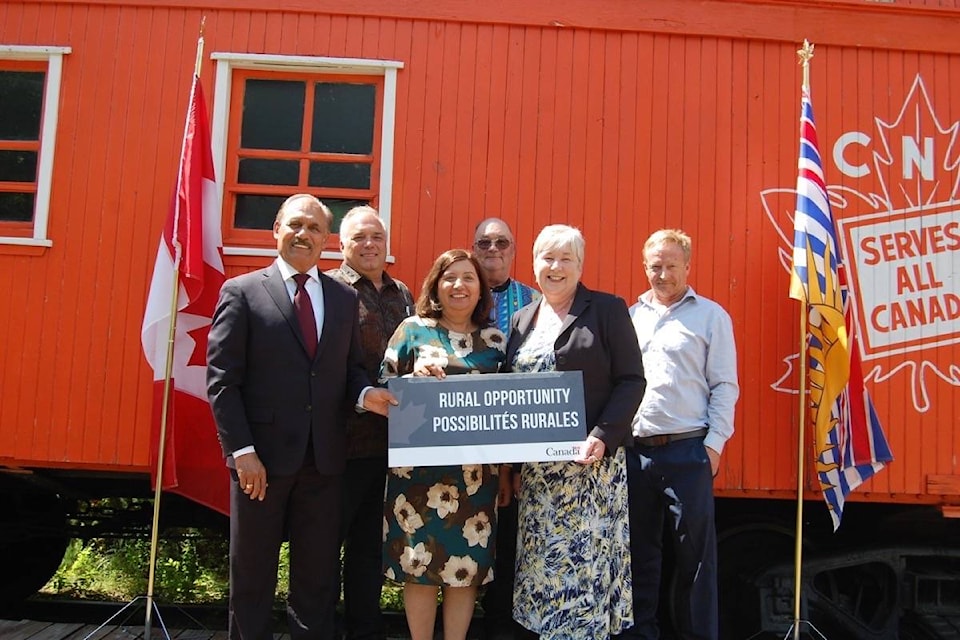The Lytton Area Wireless Society and Lyttonnet will oversee one of three projects that will provide new or improved high-speed internet access to several communities in B.C., and last week it was announced that the project would receive $4 million in funding from the federal and provincial governments, Northern Development Initiative Trust, and other funders.
The announcement was made in Lytton on July 2 by MP Bernadette Jordan, Minister of Rural Economic Development, MLA Jinny Sims, B.C. Minister of Citizens’ Services, and Mission-Matsqui-Fraser-Canyon MP Jati Sidhu. The project will see the construction of a fibre optic “backbone” from Boston Bar to Lillooet.
Backbone networks are the digital highways that move data in and out of communities. These highways carry large amounts of data that are essential for schools, hospitals, libraries, and businesses to function in a digital world, and many of the speakers at the funding announcement referred to the social and economic benefits the new fibre optic backbone will bring to small rural communities.
Dan Mundall, a civil engineer who was born in Lytton and has been working on high-speed internet in the area for more than 15 years, said “From south of Lytton to Bridge River, people can now live here because they have good internet, good connectivity.
“We’re able [in Lytton] to have the benefit of that, by keeping sharp minds here. It will greatly reduce the cost of our service and improve reliability.”
Sidhu said that he was pleased to be in Lytton to celebrate the announcement. “Connectivity in rural areas is on everyone’s mind.”
He introduced Jordan, who had left her Nova Scotia riding — which includes Peggy’s Cove — at 2:30 a.m. on July 2 to be in Lytton for 1 p.m. The minister praised the “gorgeous” location, saying “You have the second most beautiful riding in the country.”
On a more serious note, she said that she has heard a lot about the barriers rural communities face when it comes to reliable and affordable high-speed internet access. “Residents will have the opportunity to pursue meaningful careers, access essential services online, access businesses worldwide.”
Sims noted the history of Lytton as a meeting place. “Just as the rivers shake hands here, so too has the area been a meeting place between people. This country was developed by the railroad, and broadband is the railroad of the 21st century.
“The projects announced today will improve lives in B.C. People will be able to chat online, start online businesses that much easier. Students will be on a level playing field with their peers in cities. Internet connectivity brings hope, so that families can grow and flourish in rural communities. It brings the world to people’s doorsteps.”
She added “High speed internet and digital technology will help us preserve and revitalize First Nations languages. It gives rural residents the tools they need to open doors; allows them to keep their children at home, and brings back those who have left.
“And Canada’s Connectivity Strategy recognizes that Canadians exist outside the big cities.”
Rod Bate, president of the Lytton Area Wireless Society, said it would take a few years to get the work done: “I hope everyone has patience with us.” Lytton mayor Jan Polderman said that the project, being a backbone network, would help make internet service more reliable throughout the province. “On behalf of the people of Lytton, thank you to the federal and provincial governments for choosing our local service.”
Speaking with the Journal afterward, Polderman said that the project would allow people in the area to learn new skills, and was also good for employment. He added that it would probably be at least two years before the project was complete.
editorial@accjournal.ca
Like us on Facebook and follow us on Twitter
